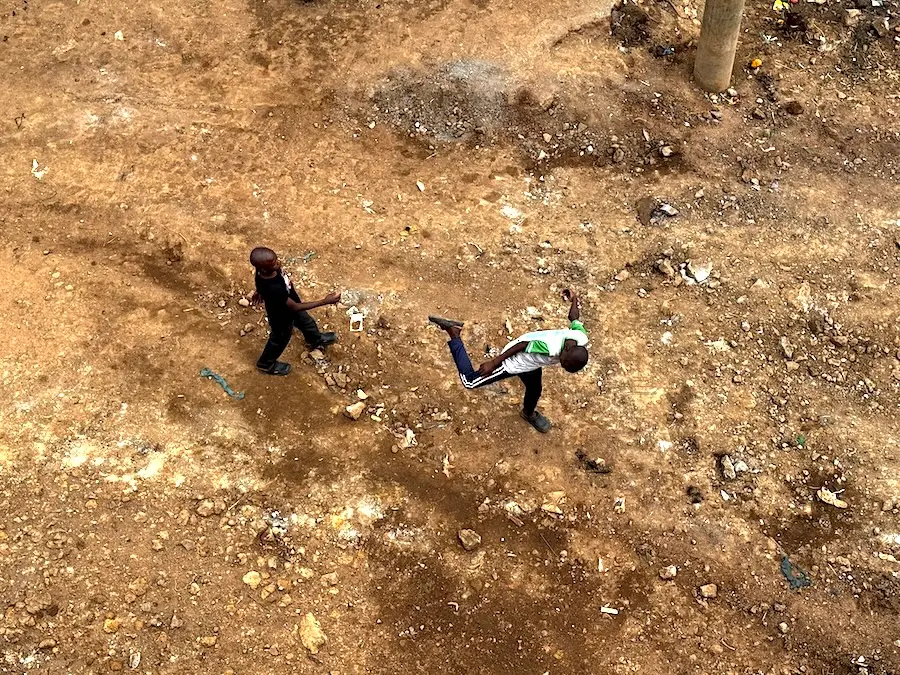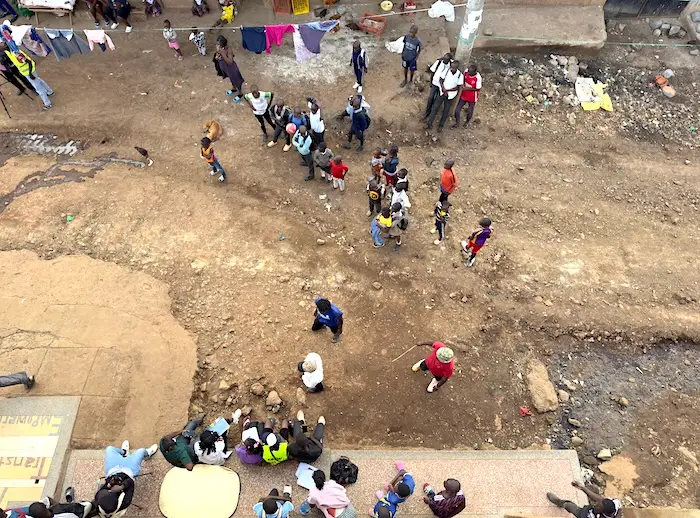
“Ya mtaa!”
The call it “Ya mtaa!” – “Our hood!”. For the slum dwellers it is their village, their home, their presence and their future. This is why they want to bringe change to the ghetto.
One of the miracles is called “football”
Football is not only popular in the major leagues or competitions. In Korogocho, this sport means much more.
Here, football, this community sport, is a real magnet for children and young people. Without football, many projects in Korogocho would be virtually inconceivable.


Learning how to survive in their hood
Food shortages and malnutritian
Mandazi, Chapati, Ugali, Hunger
Mandazi is a type of doughnut. The dough is placed in boiling hot oil until it is firm on the outside and nice and soft on the inside. ist ein beliebtes ostafrikanisches Gebäck – besonders in Kenia, Tansania und Uganda. It resembles a doughnut, but is less sweet, not glazed and often has a slight coconut flavour. Mandazi are traditionally eaten for breakfast or with tea (chai) – fresh, warm and fried until golden brown. But many people have neither the time nor the leisure for such culinary refinements. You either bake it yourself at home or buy it on the street.
Chapati can also be bought from street vendors and the few “restaurants” in the slum. Or you can make it at home. It is a flatbread, similar to the ones we know from Turkey or other countries. It is quick and easy to make. Originally introduced from India, it is now an integral part of Kenyan cuisine. It is eaten with many dishes, e.g. with beans (maharagwe), meat (nyama), vegetables or tea.
Of course, we absolutely must talk about ugali when discussing food in Kenya, including food in a slum like Korogocho.
Ugali is Kenya’s national dish – simple, nutritious and found in almost every Kenyan household. It is a firm corn porridge made from cornmeal and water. In other countries, it is known by similar names – e.g. nsima (Malawi), sadza (Zimbabwe), posho (Uganda) or pap (South Africa). Ugali is eaten with the hands, usually as a side dish with meat, vegetables or beans.
And what does all this have to do with the headline, “food shortages and malnutritian”? Well, slum dwellers do not always have the opportunity to eat one of these three foods, or even anything else. They lack money because they have no work or insufficient work. Or they share it with others, within the family or among friends, because they do not have enough.
This is called “food shortages”. It is not exactly a rare experience for the residents of Korogocho. This malnutrition inevitably leads to health risks, especially for children.
There is also hunger. It never makes the headlines, anywhere. For hunger to make the news, there have to be thousands of people affected, all in a short period of time and in one place.

“Xa mtaa”
Playing in the Streets
The flats and shacks are far too small to spend too much time in. So the children play in the streets or on the football pitches.